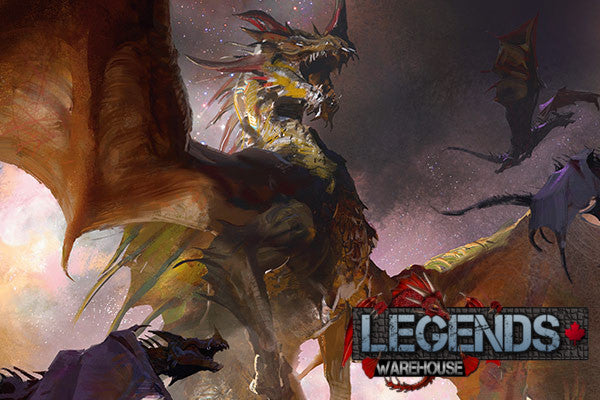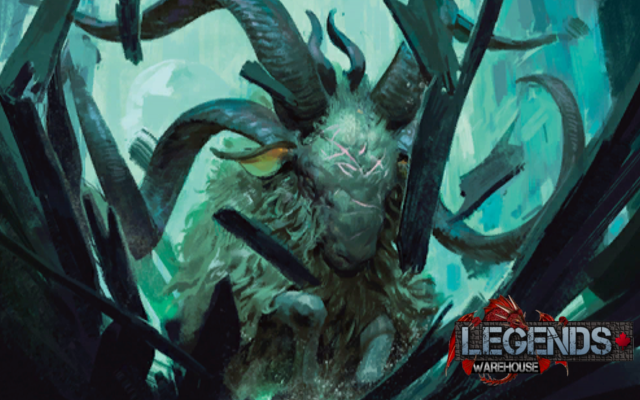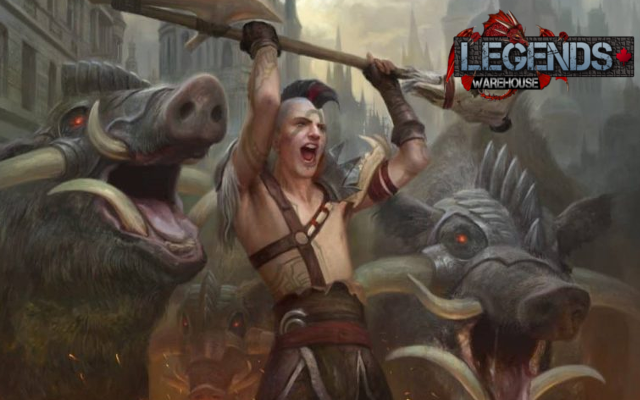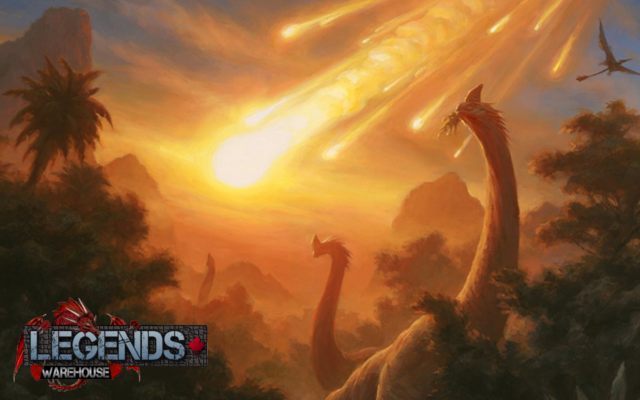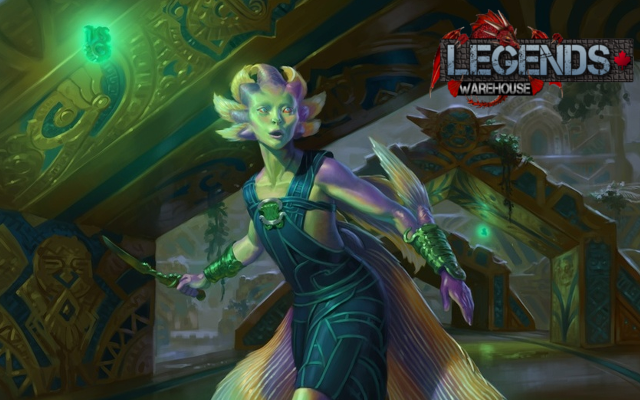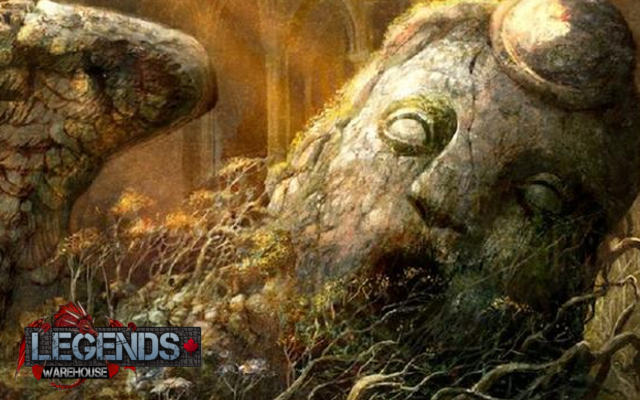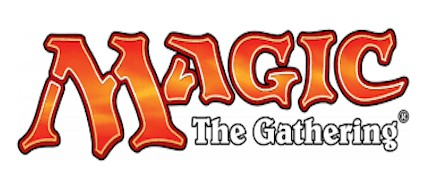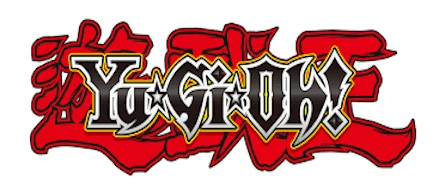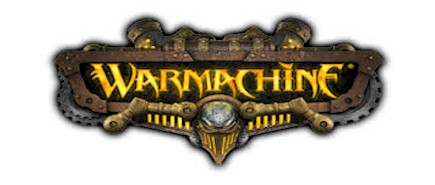How to Tune Your Dragon
- Legends Warehouse News
- 24 Aug, 2017
One of the best things about Commander pre-constructed decks is that, while they are playable right out of the box, they are easy to customize to suit one’s personal taste. Sometimes there are fantastic synergies in-box, but you want to take the Commander in a different direction, such as making Teferi, Temporal Archmage into a combo deck rather than ramp like the pre-con. These decks provide a great baseline to get you started, and then from there you can fine tune these decks however you want.
Of all the Commander 2017 decks that have been released, I’ve had my eye on the dragon deck, Draconic Domination, the most. There are a lot of ways to build the deck, from a defensive O-Kagachi deck to Ramos, Dragon Engine combo shenanigans, but I have a soft spot for just playing gigantic bombs and making the other players deal with  them. The Ur-Dragon is the perfect combination of tribal enabler, draw engine, and potentially abusable combo piece that just plain thrives in Commander. Fortunately, the majority of the deck is already set up to be “big, dumb tribal dragons”, so the majority of the heavy lifting is already done for us.
them. The Ur-Dragon is the perfect combination of tribal enabler, draw engine, and potentially abusable combo piece that just plain thrives in Commander. Fortunately, the majority of the deck is already set up to be “big, dumb tribal dragons”, so the majority of the heavy lifting is already done for us.
Unfortunately, one of the biggest failings of Draconic Domination out of the box is that for a five-colour deck, the manabase and colour-fixing is atrocious. With 18 basic lands and eight cards to actually fix your colours, getting the right mix of lands on time to cast your dragons is going to be a nightmare. The most important thing to do with a five-colour manabase is get as many multicolour lands as you can so you can cast your spells as easily as possible. While having Command Tower, Haven of the Spirit Dragon, Path of Ancestry, and the full ten tri-lands from Shards of Alara and Khans of Tarkir helps, but there is always room for improvement. Obviously, the ideal manabase would be teeming with dual lands, shocks, and fetches, but not everyone has the collateral available to get a bank loan that big. Fortunately, there are plenty of budget-friendly options to improve this dismal land setup.
First and foremost, we have the Gate cycle from Dragon’s Maze. These were all reprinted at common in Modern Masters 2017, so they’re in steady supply. Each land produces two colours, and with the Gate subtype comes cards like Gatecreeper Vine and even Maze’s End to supplement it. As well, Khans of Tarkir and Zendikar each have cycles of “comes into play tapped” lands that not only produce two colours of mana, but gain you life as well. These cards are a necessity for bolstering a five-colour manabase since the life gain gives you a marginal edge against more aggressive decks.
Five-colour decks traditionally run lands capable of producing all colours of mana with  a slight drawback. Cards like City of Brass and Mana Confluence provide any colour while pinging you for a damage each time you use them, while Reflecting Pool can tap for any colour that you can already produce which is only really a downside when you’re missing a specific one to cast the spell you want. Exotic Orchard is inexplicably absent from Draconic Domination but actually appears in the Wizard pre-con, and effectively acts as a reverse Reflecting Pool by tapping for any colour your opponent’s lands could produce. This is fantastic when you’re playing against other multicolour decks like the ones in Commander 2016. Finally, for when you have some money to burn there’s Cavern of Souls, the definitive tribal land. Cavern is necessary for when you want your giant dragons to actually resolve against a Blue deck, and the fact that it colour fixes for your dragon spells makes it much easier to play your multicoloured dragons on curve. While the price tag can be a bit daunting, all it takes is a game or two with Cavern in play to really drive home how worthwhile it is.
a slight drawback. Cards like City of Brass and Mana Confluence provide any colour while pinging you for a damage each time you use them, while Reflecting Pool can tap for any colour that you can already produce which is only really a downside when you’re missing a specific one to cast the spell you want. Exotic Orchard is inexplicably absent from Draconic Domination but actually appears in the Wizard pre-con, and effectively acts as a reverse Reflecting Pool by tapping for any colour your opponent’s lands could produce. This is fantastic when you’re playing against other multicolour decks like the ones in Commander 2016. Finally, for when you have some money to burn there’s Cavern of Souls, the definitive tribal land. Cavern is necessary for when you want your giant dragons to actually resolve against a Blue deck, and the fact that it colour fixes for your dragon spells makes it much easier to play your multicoloured dragons on curve. While the price tag can be a bit daunting, all it takes is a game or two with Cavern in play to really drive home how worthwhile it is.
The most important part of playing a deck full of large creatures like dragons is being able to play them as early as you can. This way you can overwhelm your opponents with the sheer power level of your creatures well before they can put up a defense. In order to do that, you need a solid ramp package. While The Ur-Dragon’s Eminence ability, Dragonspeaker Shaman, and Dragonlord’s Servant are fine for reducing the cost of your dragon creatures, it’s important to have more tangible ramp in the form of lands and artifacts. Out of the box, the deck only has five cards that both ramp and fix your mana, which for a five-colour deck is nowhere near enough. It’s baffling that a card like Chromatic Lantern that was reprinted just last year wouldn’t get the nod since it not only ramps you but lets your lands tap for any colour as well. Even Coalition Relic would have been a welcome, albeit slower, alternative. While artifact ramp is important, ramping your lands is also integral to getting your game plan online. As such, I recommend including Explosive Vegetation and Hour of Promise which can each grab you two lands, accelerating you two turns and getting you into dragon casting range.
Another important element of the “big monsters” style of gameplay is cheating your creatures into play. While The Ur-Dragon can put creatures into play from his trigger, sometimes you need something a little cheaper and instant-speed to get the ball rolling. This is where cards like Quicksilver Amulet, Belbe’s Portal, Dragon Arch, and Show and Tell do wonders. These cards cheat your dragons directly into play from your hand at a significantly reduced cost than if you tried to cast them normally, so you can potentially have something as powerful as Atarka, World Render in play as early as the third turn! Furthermore, with Sarkhan’s Triumph, you can tutor out your most powerful dragon at instant-speed to set up a Quicksilver Amulet activation on your opponent’s turn. This is especially powerful since you can tutor up and cheat creatures like Scourge of Valkas into play to pick off opposing creatures at your leisure.
creatures into play. While The Ur-Dragon can put creatures into play from his trigger, sometimes you need something a little cheaper and instant-speed to get the ball rolling. This is where cards like Quicksilver Amulet, Belbe’s Portal, Dragon Arch, and Show and Tell do wonders. These cards cheat your dragons directly into play from your hand at a significantly reduced cost than if you tried to cast them normally, so you can potentially have something as powerful as Atarka, World Render in play as early as the third turn! Furthermore, with Sarkhan’s Triumph, you can tutor out your most powerful dragon at instant-speed to set up a Quicksilver Amulet activation on your opponent’s turn. This is especially powerful since you can tutor up and cheat creatures like Scourge of Valkas into play to pick off opposing creatures at your leisure.
Now that we have the ramp and the means to cheat our monsters into play, we have to expand on the kinds of creatures we have at our disposal. There are over 100 different dragon creatures in Magic, each with unique stats and abilities, and narrowing it down to a specific set is always up to personal tastes. For my own build of The Ur-Dragon, I wanted big, bold effects that could overwhelm an opponent on their own as well as in conjunction with the rest of my dragons. For example, Karrthus, Tyrant of Jund is an auto-include for me because it not only grants my other dragons haste, but steals any dragons my opponents may have as well. This means that I can use it offensively as well as defensively if I cheat it in on an opponent’s turn with Quicksilver Amulet.
dragon creatures in Magic, each with unique stats and abilities, and narrowing it down to a specific set is always up to personal tastes. For my own build of The Ur-Dragon, I wanted big, bold effects that could overwhelm an opponent on their own as well as in conjunction with the rest of my dragons. For example, Karrthus, Tyrant of Jund is an auto-include for me because it not only grants my other dragons haste, but steals any dragons my opponents may have as well. This means that I can use it offensively as well as defensively if I cheat it in on an opponent’s turn with Quicksilver Amulet.
Another dragon I’m excited to include is Kilnmouth Dragon. Amplify was an undervalued ability in Standard, but with the sheer amount of cards you can draw with The Ur-Dragon in play, you can typically play Kilnmouth Dragon as at least a 14/14. From there it’s a simple matter of tapping it to pick off your opponent’s creatures until you can swing in for one big lethal strike. This card also ties in nicely with Scourge of the Throne, a dragon capable of untapping all of your attacking creatures when you attack the player with the most life and giving you an additional combat step. Getting to use the attack triggers of The Ur-Dragon, Silumgar, the Drifting Death, or Atarka, World Render twice in a turn can massively alter the course of a game. Another fun trick is that while Scourge of the Throne’s ability will only trigger the first time it attacks, if you have a way to blink it and give it haste, such as with Temur Ascendancy or Fervor, it will technically be considered a new object and you can get even more extra combat steps.
With just a few simple tweaks, Draconic Domination can be a truly terrifying powerhouse. All it takes is a proper manabase, a little more ramp, and some fun and exciting dragons and you can really elevate the deck to something awesome. This deck is battlecruiser Magic at its finest, with giant monsters coming down left, right, and centre, and the sheer power of dropping dragons every turn is well worth the time and effort. The Ur-Dragon is definitely worth building, and with a little fine tuning you’re in for some serious fun.



